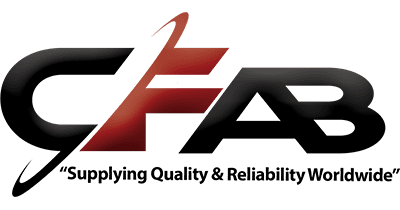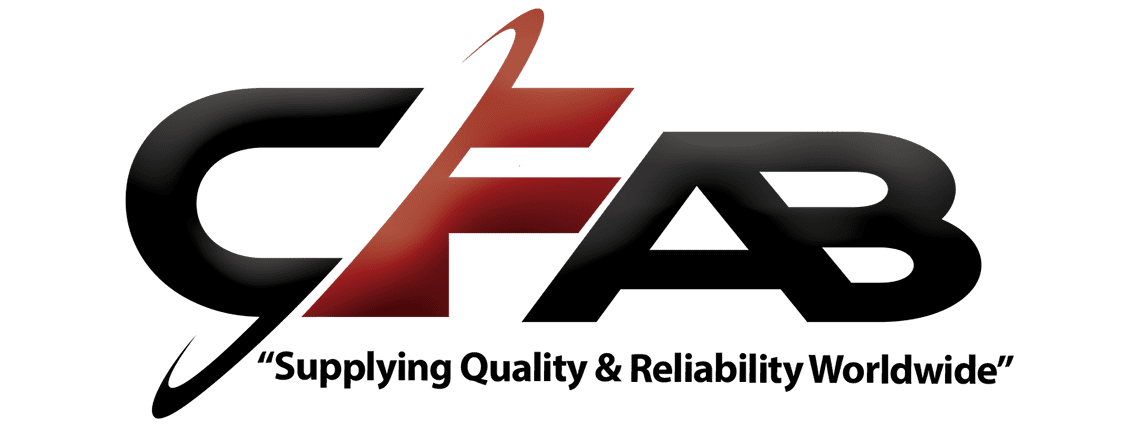KPI in manufacturing company is a critical concept you need to understand to improve efficiency and achieve strategic goals. Some of the most essential KPIs include:
- On-time Delivery: Measures customer satisfaction and delivery performance.
- Overall Equipment Effectiveness (OEE): Focuses on machine availability, performance, and quality.
- Throughput: Tracks the volume of product produced over time.
In today’s competitive industry landscape, manufacturing companies face the relentless pursuit of efficiency and cost reduction. Key Performance Indicators (KPIs) are indispensable tools that guide manufacturers in measuring performance and steering their operations toward strategic objectives. By focusing on vital metrics, companies can improve production efficiency, minimize waste, and bolster profitability.
As Todd Cleppe, with a profound background in changing manufacturing processes and maximizing machinery output, I’ve witnessed the power of effective KPI utilization in elevating business operations. Next, we’ll dig into understanding KPIs in manufacturing and how they can drive success.
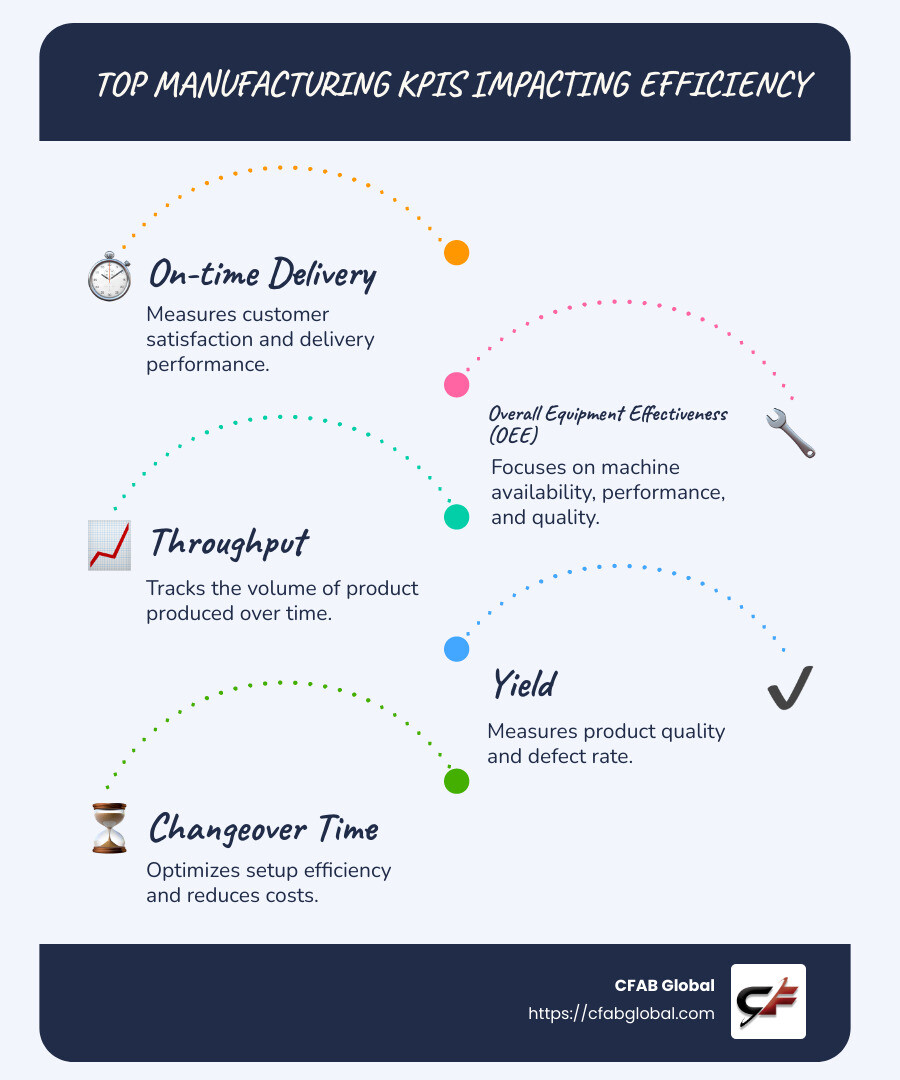
Understanding KPIs in Manufacturing
In manufacturing, Key Performance Indicators (KPIs) are like a compass guiding companies towards their strategic goals. They are quantifiable measures that help businesses understand how well they are doing in terms of production performance and efficiency.
Quantifiable Measures
KPIs are all about numbers. They provide concrete data that can be measured and analyzed. For instance, metrics like Overall Equipment Effectiveness (OEE), which assesses the availability, performance, and quality of equipment, are crucial. These measures give a clear picture of where improvements can be made to improve productivity and reduce downtime.
Aligning with Business Goals
Every manufacturing company has its unique set of goals. Whether it’s increasing production speed, reducing waste, or improving product quality, KPIs must align with these objectives. By focusing on specific goals, KPIs ensure that every action taken is a step towards achieving them. For example, tracking On-time Delivery helps gauge customer satisfaction and pinpoint areas affecting delivery performance, thus aligning with customer-centric business strategies.
Enhancing Production Performance
KPIs are not just about tracking; they are about improving. They shine a spotlight on areas that need attention. For example, a high Scrap Rate indicates issues in the production process that need correction. By addressing these issues, manufacturers can improve their yield, reduce costs, and improve overall performance.
Incorporating KPIs into daily operations allows companies to make informed decisions and implement strategies for continuous improvement. Whether it’s optimizing machine capacity through Capacity Utilization metrics or ensuring quality control with Customer Return Rate data, KPIs are essential for maintaining a competitive edge.
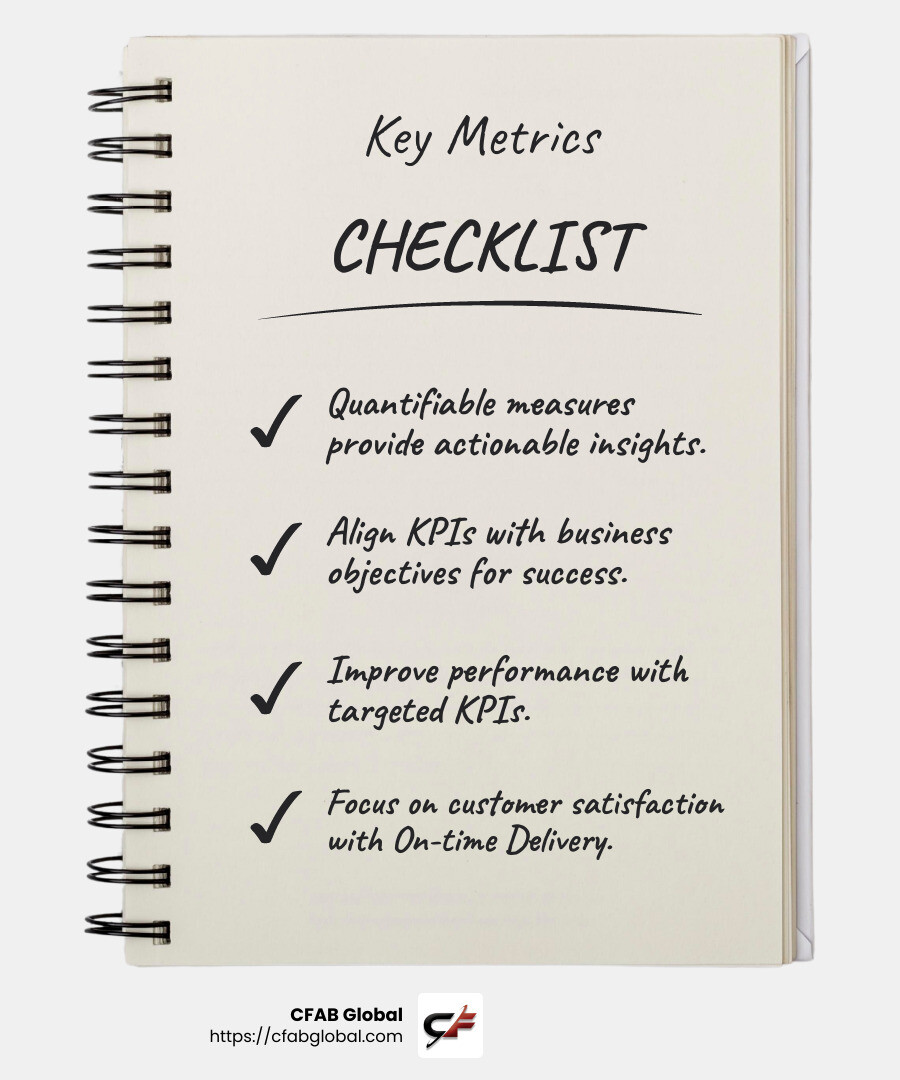
In summary, understanding and utilizing KPIs in manufacturing is crucial for any company aiming to thrive in a competitive market. They provide the data-driven insights necessary to improve efficiency, align with business goals, and boost production performance. We’ll explore the top KPIs every manufacturing company should track to ensure success.
Top 12 Manufacturing KPIs
On-time Delivery
On-time delivery is essential for customer satisfaction. It measures how effectively a company meets promised delivery schedules. A high on-time delivery rate reflects strong delivery performance, which is crucial for maintaining customer trust and loyalty. Tracking this KPI helps identify bottlenecks in the supply chain and areas needing improvement to ensure timely product delivery.
Overall Equipment Effectiveness (OEE)
OEE is a comprehensive metric that evaluates equipment performance by considering availability, performance, and quality. It highlights how well manufacturing equipment is used during production. An OEE score below 85% indicates room for improvement, suggesting potential inefficiencies in machine uptime, speed, or product quality.
Production Schedule Attainment
This KPI assesses how well a company adheres to its production plans. It measures planning accuracy and operational efficiency. High production schedule attainment ensures that manufacturing processes are on track, minimizing delays and disruptions.
Total Cycle Time
Total cycle time measures the production duration from start to finish. Short cycle times indicate high efficiency and a streamlined process. Reducing cycle time helps manufacturers respond quickly to market demands and reduces costs associated with prolonged production phases.
Throughput
Throughput measures machine performance by evaluating the number of units produced over a given period. Real-time monitoring of this KPI allows manufacturers to address issues promptly, ensuring machines operate at optimal capacity. This leads to increased productivity and reduced downtime.
Capacity Utilization
Capacity utilization assesses how effectively a machine’s potential is being used. It compares actual output to maximum potential output, indicating efficiency. High capacity utilization means machines are being used to their fullest, reducing idle time and maximizing return on investment.
Changeover Time
Changeover time tracks the duration required to switch from producing one product to another. Efficient setup processes reduce changeover time, leading to cost reduction and increased production time. Streamlining this process can significantly improve overall manufacturing efficiency.
Yield
Yield, or First Time Through (FTT), measures the percentage of products manufactured without defects. A high yield indicates effective quality control and minimal defect rates. Improving yield reduces waste and costs associated with rework or scrap.
Scrap
Scrap rate measures the percentage of materials discarded due to errors or defects. Effective waste management and cost control strategies can lower scrap rates. Monitoring this KPI helps identify process inefficiencies and improve product quality.
Planned Maintenance
Planned maintenance tracks the time allocated for scheduled maintenance versus emergency repairs. A robust maintenance strategy reduces downtime and extends equipment life. Keeping planned maintenance below 15% of total maintenance time minimizes costly disruptions.
Availability
Availability measures machine uptime, considering both planned and unplanned downtime. High availability indicates efficient operations and minimal downtime. Analyzing downtime causes helps manufacturers implement strategies to improve machine uptime and process reliability.
Customer Return Rate
Customer return rate tracks the percentage of goods returned by customers due to quality issues. This KPI provides valuable customer feedback and highlights areas needing quality control improvements. Reducing the return rate improves customer satisfaction and reduces costs associated with rework or replacements.
By focusing on these key performance indicators, manufacturing companies can identify areas for improvement, improve operational efficiency, and meet strategic goals. As we dig deeper into how to make KPIs actionable, we’ll explore methods to leverage these metrics for continuous growth and success.
How to Make KPIs Actionable
Turning data into action is where the true power of KPIs in manufacturing companies lies. Simply tracking metrics isn’t enough; you need to ensure they drive meaningful improvements. Here’s how:
Stakeholder Feedback
First, involve key stakeholders in the KPI process. They provide valuable insights into what metrics matter most for achieving business goals. Regularly share KPI data with them and gather feedback. This collaboration helps refine KPIs to better align with strategic objectives. For instance, Toyota uses detailed KPI tracking to monitor model-specific defects and worker productivity, allowing them to address inefficiencies early on .
Align with Business Strategy
KPIs should be closely tied to your business strategy. They need to reflect your company’s unique goals and challenges. Consider what you’re trying to achieve—whether it’s improving product quality, reducing costs, or enhancing customer satisfaction. KPIs must be relevant to these objectives to drive the right actions. World-class manufacturers use KPIs to boost speed and quality while cutting costs, a practice known as industrial change source.
Continuous Improvement
KPIs should be a tool for continuous improvement. Analyze trends over time to identify areas for improvement. When a KPI signals an issue, quickly gather your team to brainstorm solutions and implement countermeasures. For example, Bosch uses automated data gathering to gain real-time visibility into metrics like asset utilization and cycle times, enabling them to make faster strategic decisions and share best practices across locations source.
Make KPIs Visible
Display KPI data on dashboards and scorecards in common areas. This visibility keeps everyone informed and aligned with company goals. Use technology like meters, sensors, and IoT devices to automate data capture, minimizing manual entry and ensuring real-time updates.
Incentivize KPI Achievement
Tie KPI targets to incentives such as bonuses or recognition. This motivates employees to engage with KPI goals and work towards achieving them. Linking KPIs to rewards fosters a culture of accountability and performance.
By following these steps, you can transform KPIs from mere numbers into powerful tools that drive strategic actions and continuous growth. In the next section, we’ll address common questions about KPIs in manufacturing to deepen your understanding of their role and importance.
Frequently Asked Questions about KPIs in Manufacturing
What is a KPI in a manufacturing company?
A Key Performance Indicator (KPI) in a manufacturing company is a quantifiable measure used to evaluate the success of an organization in achieving specific operational goals. Think of KPIs as the vital signs of your manufacturing processes. They provide insights into areas like production efficiency, quality control, and customer satisfaction. For instance, measuring Overall Equipment Effectiveness (OEE) helps manufacturers assess how well their machinery is performing, combining factors like availability, performance, and quality.
How do you measure manufacturing KPIs?
Measuring manufacturing KPIs involves collecting data from various processes and analyzing it against predefined targets. This can be done through manual tracking or automated systems using sensors and IoT devices. For example, to measure On-time Delivery, you would track the percentage of orders delivered by the promised date using the formula: On Time Units Delivered ÷ Total Units Delivered. Advanced software solutions can streamline this process by providing real-time analytics and dashboards, allowing you to monitor KPIs like Cycle Time and Throughput efficiently.
Why are KPIs important in manufacturing?
KPIs are crucial in manufacturing because they help companies identify strengths and weaknesses in their operations. By regularly monitoring KPIs, manufacturers can uncover opportunities to improve productivity, reduce costs, and improve product quality. For instance, tracking Scrap rates allows businesses to pinpoint waste issues and implement cost-saving measures. Moreover, KPIs like Customer Return Rate provide insights into product quality and customer satisfaction, enabling companies to make informed decisions and maintain a competitive edge in the market.
In the next section, we’ll conclude our discussion by exploring how CFAB Global’s Machine Reliability Program can help your manufacturing operations achieve new heights of efficiency and reliability.
Conclusion
At CFAB Global, we understand the critical role that Key Performance Indicators (KPIs) play in driving operational efficiency and business success. Our Machine Reliability Program is designed to help manufacturers optimize their machinery performance and extend equipment lifespan, which is essential for maintaining high KPI standards.
Machine Reliability Program: A Customized Approach
Our program offers a custom approach to improve machine reliability, ensuring that your equipment operates at peak performance. By leveraging predictive maintenance strategies, we help you reduce unplanned downtime and improve overall equipment effectiveness (OEE). This proactive maintenance not only boosts your OEE scores but also aligns with other essential KPIs like Availability and Planned Maintenance.
Operational Efficiency: Achieving New Heights
Through our comprehensive solutions, CFAB Global empowers manufacturers to streamline their operations. By focusing on critical KPIs such as Total Cycle Time, Throughput, and Capacity Utilization, we provide the insights needed to improve efficiency and productivity. Our expert team works closely with you to identify bottlenecks and implement strategies that lead to continuous improvement.
Partnering for Success
Choosing CFAB Global means partnering with a trusted leader in machinery solutions. Our commitment to delivering measurable results ensures that your business not only meets its strategic goals but also achieves a significant return on investment. With our support, you can focus on what matters most—delivering high-quality products and satisfying your customers.
For more information on how our Machine Reliability Program can transform your manufacturing operations, visit our Machine Reliability Program page. Let CFAB Global be your partner in achieving manufacturing mastery.
